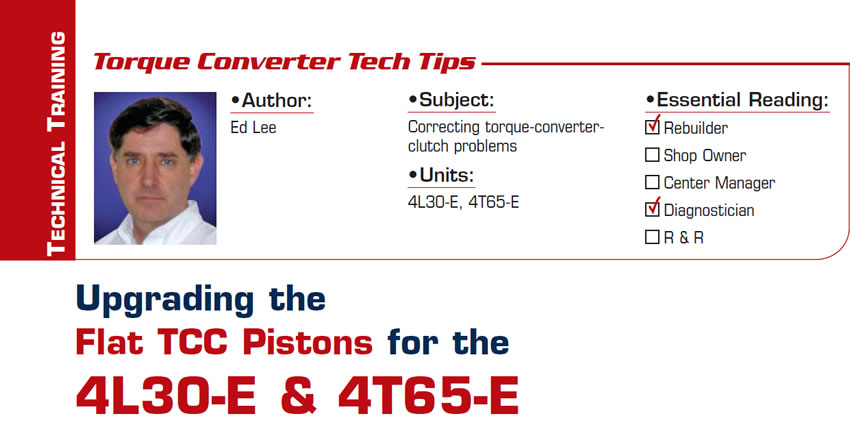Front-Seal Blowout after Converter Replacement in 09D/T Transmissions
The Aisin AW TR-60SN/VW 09D/T transmissions are found in the 2002-2010 VW Touareg and the 2003-2010 Porsche Cayenne. There have been reports of the front seal blowing out after the torque converter and related parts have been replaced.
The root cause of the seal blowing out is the buildup of pressure because the drain-back passage that normally vents the area behind the front seal is blocked. This area is normally vented through the stator support/pump cover. The seal-blowout issue occurs when the pump (body and gears) is mated to an incorrect stator support (pump cover) and blocks the drain-back passage. To understand how easy it is to make this mismatch, you need to know the large number of possible combinations. Be aware that the seal-blowout problem is only one of several issues that you can create if you mismatch components.
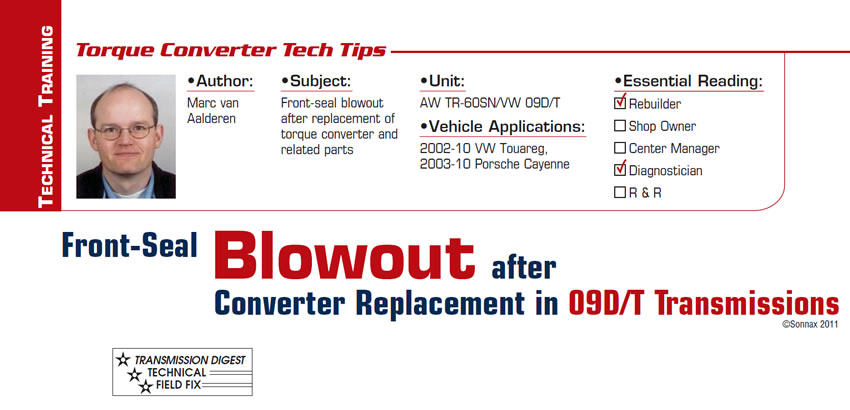
Nissan RE5R05A: Converter shudder after repair of a radiator cooler failure
This vehicle is a 108,261-mile 2000 Nissan Pathfinder with pink ATF. Sound familiar? Yep, the radiator had failed. We had ATF in the radiator and anti-freeze in the ATF – typical Nissan repair these days. Seems like 20 years ago we had the same issues.
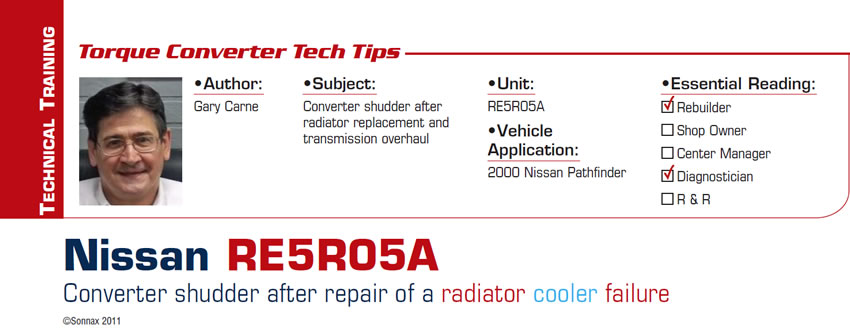
Overheated Honda Converters/740 Codes
Overheated Honda converters have become a living nightmare for many transmission and torque-converter shops, one that has lingered way too long because of the many misconceptions and missteps during the problem-solving process. The blame game has gone back and forth, but the torque-converter rebuilders have been receiving most of the criticism.

Retrofitting the GM 12-Inch 350/400 Non-Lockup Converter
The GM 12-inch 350/400 non-lockup converter is still very popular with torque-converter rebuilders. The converters are needed for many vehicles from that era that are being restored, and even more are used in the construction of street rods. The high demand and limited availability for cores have been an issue with some rebuilders. The lack of cores is easy to understand when you consider it has been more than three decades since the last GM 12-inch non-lockup converter was manufactured.
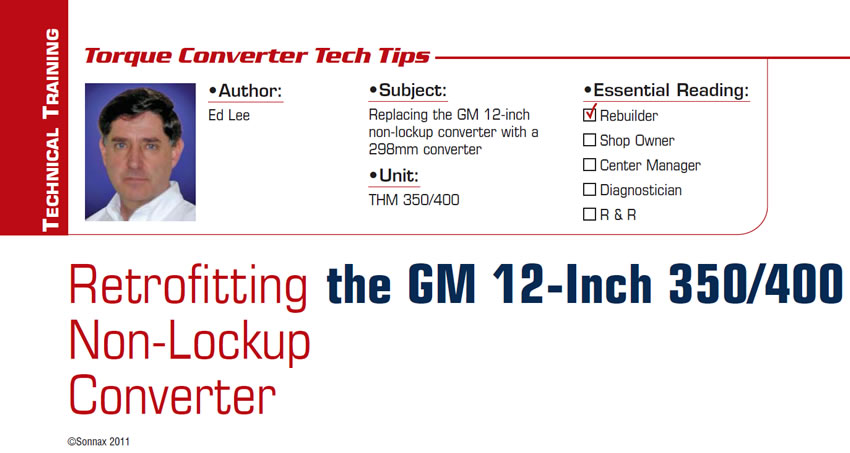
New Converters: Visually Inspect, Measure, Document
Every torque-converter shop should have a system to visually inspect, measure and document a converter when it is seeing the converter for the first time.
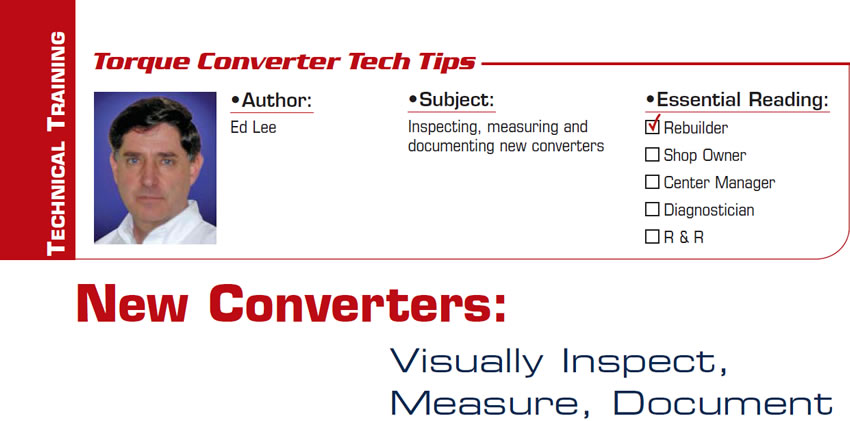
Piston-Lining Wear in GM 300mm Converters
The customer was driving 55 mph when he noticed an engine-speed flare and realized that the lockup was no longer holding. There also was a growling noise when the converter tried to lock up. When the converter was cut open, there was fine black material resembling graphite on the stator assembly.
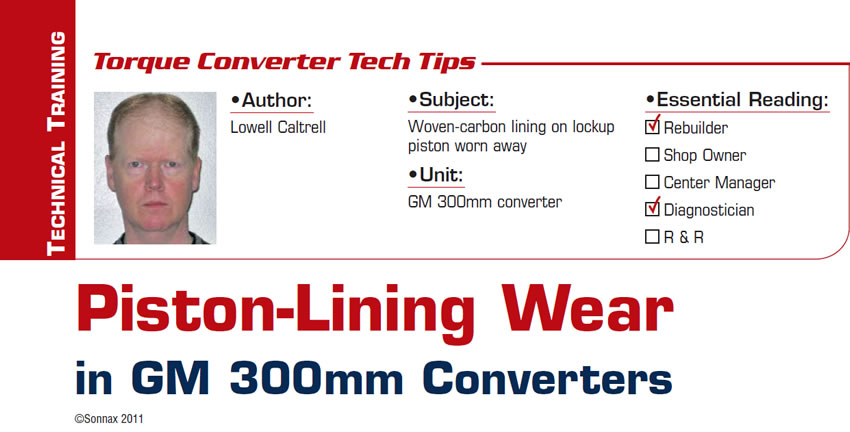
Overall-Height Issues and Pump-Gear Problems
Some GM vehicles with 4L60-E transmissions and 300-millimeter converters are experiencing higher-than-normal pump-gear failures. Affected vehicles are 2002-2003 Bravada, Envoy and Trailblazer (Dacco B-85 VJCX) equipped with the 4.2L engine. An easy way to identify this converter is that it is the only GM 300mm unit whose impeller overlaps the front cover rather than vice versa.
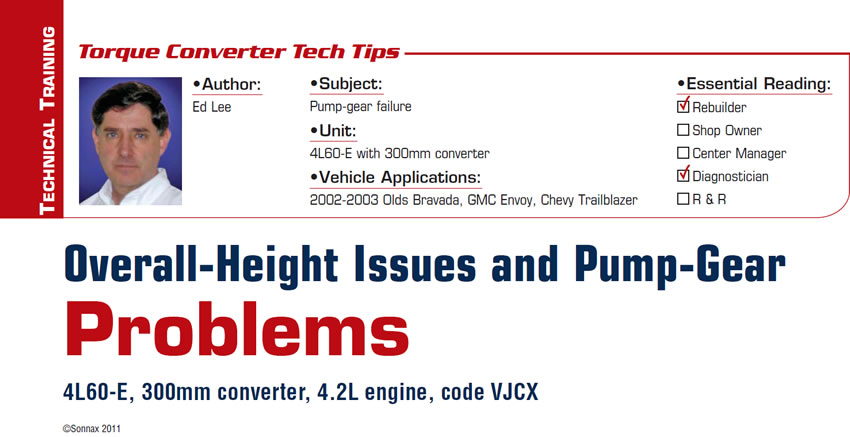
Walking the Thin Line
The late-model 518 is a prime example of this statement. When we get OE cores, the covers measure 0.160 to 0.165 inch thick if they are undamaged. The front covers can normally be cleaned up by machining off 0.005 inch of material. The challenge comes when we get a cover that was galled or damaged by a major lockup failure. In these instances, you may have to machine off as much as 0.015 inch, and at this point you end up with a cover that is only 0.145 inch to 0.150 inch thick. The question is, how far can you go? Where is the line between thick enough and no longer thick enough?
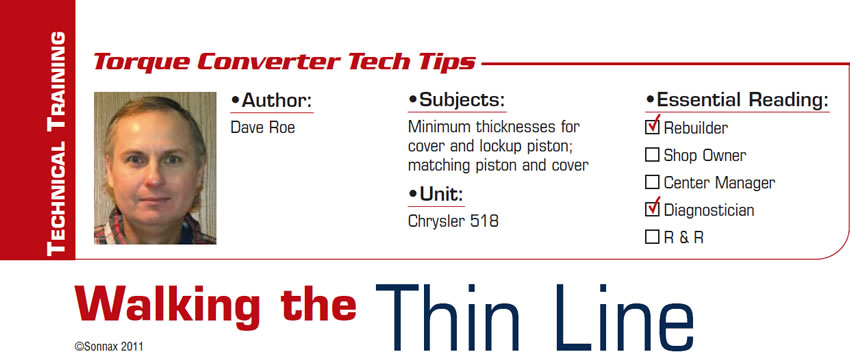
First Aid for Stators
In the early days of torque-converter rebuilding, most of the routine work involved re-machining thrust surfaces and then restoring clearances. Available service items such as thicker thrust washers and thicker end caps made this work relatively easy.
When the outer race of the one-way clutch became loose in the stator, rebuilders of the day faced a far-more-difficult challenge. The splined area on the outside diameter (OD) of the outer race broached a mirrored spline on the inside diameter (ID) of the stator when it was originally pressed into place (Figure 1).
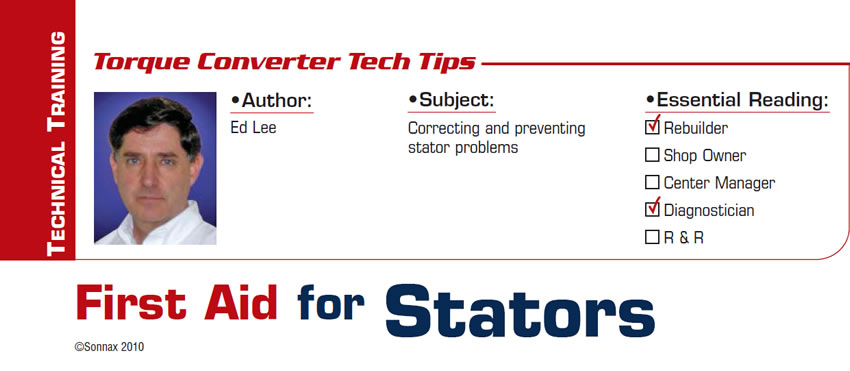
Pooling our Resources
The Torque Converter Rebuilders Association (TCRA) recently formed a technical committee to address the technical needs of torque-converter rebuilders and funnel technical information to its members. This information will be presented on the TCRA Web site and in the TCRA newsletter, among other publications.
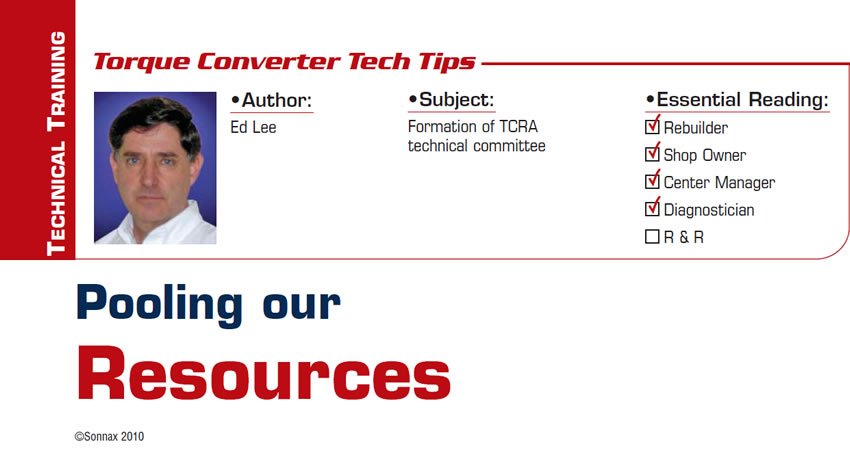
6T70/75 Converter-Pilot Issues
To date most of the converters seen at converter-remanufacturing facilities have had vibration and/or leak complaints. After taking a closer look at the attachment between the pilot and cover, it is easy to see why (Figure 2).
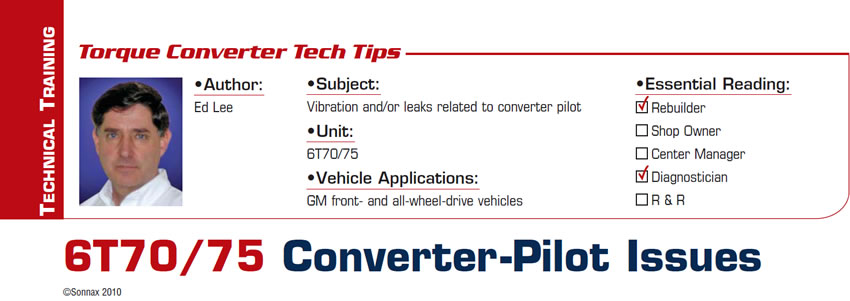
Upgrading the Flat TCC Pistons for the 4L30-E & 4T65-E
The 4T65-E and 4L30-E share a number of issues related to the torque-converter clutch (TCC). Both transmissions are notorious for their TCC-application and shudder problems. A root-cause analysis of each application yielded similar results.
